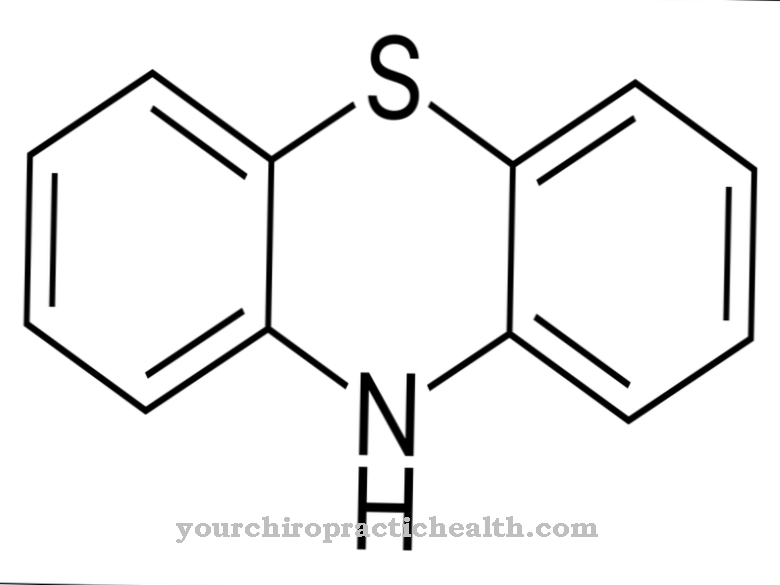The Tranexamic acid is an antifibrinolytic and inhibits the dissolution of blood clots. The substance is used to stop and prevent bleeding caused by hyperfibrinolysis.
What is tranexamic acid?
The substance tranexamic acid is an antifibrinolytic. It inhibits the fibrinolysis system and thus ultimately inhibits clot dissolution (fibrinolysis).
Tranexamic acid is produced exclusively synthetically and is similar to lysine. The substance belongs to the group of para-aminocarboxylic acids. Tranexamic acid is readily soluble in water, but only poorly in ethanol and diethyl ether.
The substance is in a solid state of aggregation as a beige solid, the melting point is between 386 and 392 degrees Celsius. The substance decomposes at these temperatures. The molar mass of tranexamic acid is 157.21 g x mol ^ -1. The chemical formula of the substance is C8H15NO2.
Pharmacological effect
Tranexamic acid is administered orally, intravenously or locally. The bioavailability of the substance is 30-50% after oral administration and is not impaired by simultaneous food consumption. The plasma protein binding is 3%, whereby the substance is almost exclusively bound to the plasmin.
Tranexamic acid crosses the placenta 100%, but only one percent crosses breast milk. Minor metabolism takes place in the liver; 95% of the substance is excreted unchanged in the urine. There is no excretion in the stool. The half-life of tranexamic acid is 2 hours.
Pharmacodynamically, the drug works by blocking the formation of plasmin. This blocking takes place by inhibiting the proteolytic activity of the plasminogen activators. Overall, this leads to the plasmin being hindered in its ability or task to dissolve (lyse) fibrin. In low doses of tranexamic acid, it acts as a competitive inhibitor of plasmin, but in higher doses it is a non-competitive inhibitor.
As already mentioned, there is very little metabolism in the liver, 95% of the elimination takes place renally. If tranexamic acid is given together with factor IX, the risk of thrombosis increases. Due to the almost exclusively renal elimination, the dose must be adjusted in the event of renal insufficiency.
The active ingredient is administered orally in the form of tablets or effervescent tablets. Intravenous application is also possible. Since the substance is also active in the urine, it can also be used to treat bleeding in the urinary tract.
Medical application & use
Tranexamic acid is an antifibrinolytic. The substance is used medically for the therapy of bleeding due to hyperfibrinolysis, increased blood clot dissolution, as well as for the prophylaxis of bleeding due to possible hiberfibrinolysis.
Tranexamic acid is also used as an antidote for bleeding during fibrinolytic therapy. Further indications are the promotion of coagulation in postnatal (postpartum) bleeding, the prophylaxis of bleeding during dental interventions in high-risk patients and the prophylaxis of bleeding in surgical interventions with a high risk of bleeding.
Furthermore, tranexamic acid is used in hypermenorrhea, as an accompanying medication when administering fibrinogen and in hereditary angioedema. In the case of nosebleeds, it can be applied using a nebulizer.
You can find your medication here
➔ Drugs for wound treatment and injuriesRisks & side effects
The side effects of tranexamic acid include allergies, skin rashes, an increased risk of theombosis in patients with a corresponding predisposition (this can result in heart attacks, strokes and pulmonary embolisms), atrial fibrillation and visual disturbances. If factor IX is administered at the same time, the risk of thrombosis also increases.
If there is a pre-existing thrombosis, tranexamic acid must not be taken, as well as during breastfeeding. If there is heavy bleeding in the urinary tract, clots ("blood plugs") can form, which can lead to urinary stasis.
There are also relative contraindications, for example in consumption coagulopathy. Here the individual risk must be weighed up by the doctor. The same applies to bleeding in the urinary tract. Tranexamic acid works well here, but there is a risk of clot formation, which can cause urinary congestion. Thus, there is a relative contraindication here too, in which the risk must be weighed up by the doctor.
Tranexamic acid requires a prescription and may therefore only be administered or prescribed by a doctor, as the administration must always be preceded by a diagnosis and an assessment of the individual risk.



























